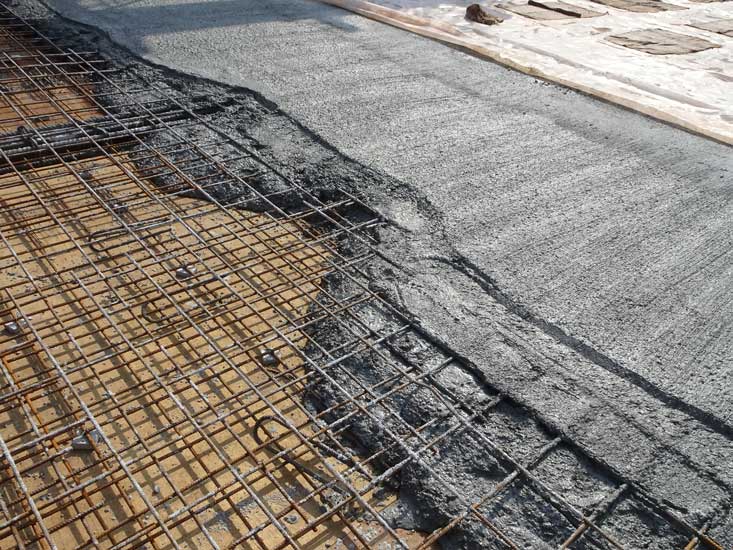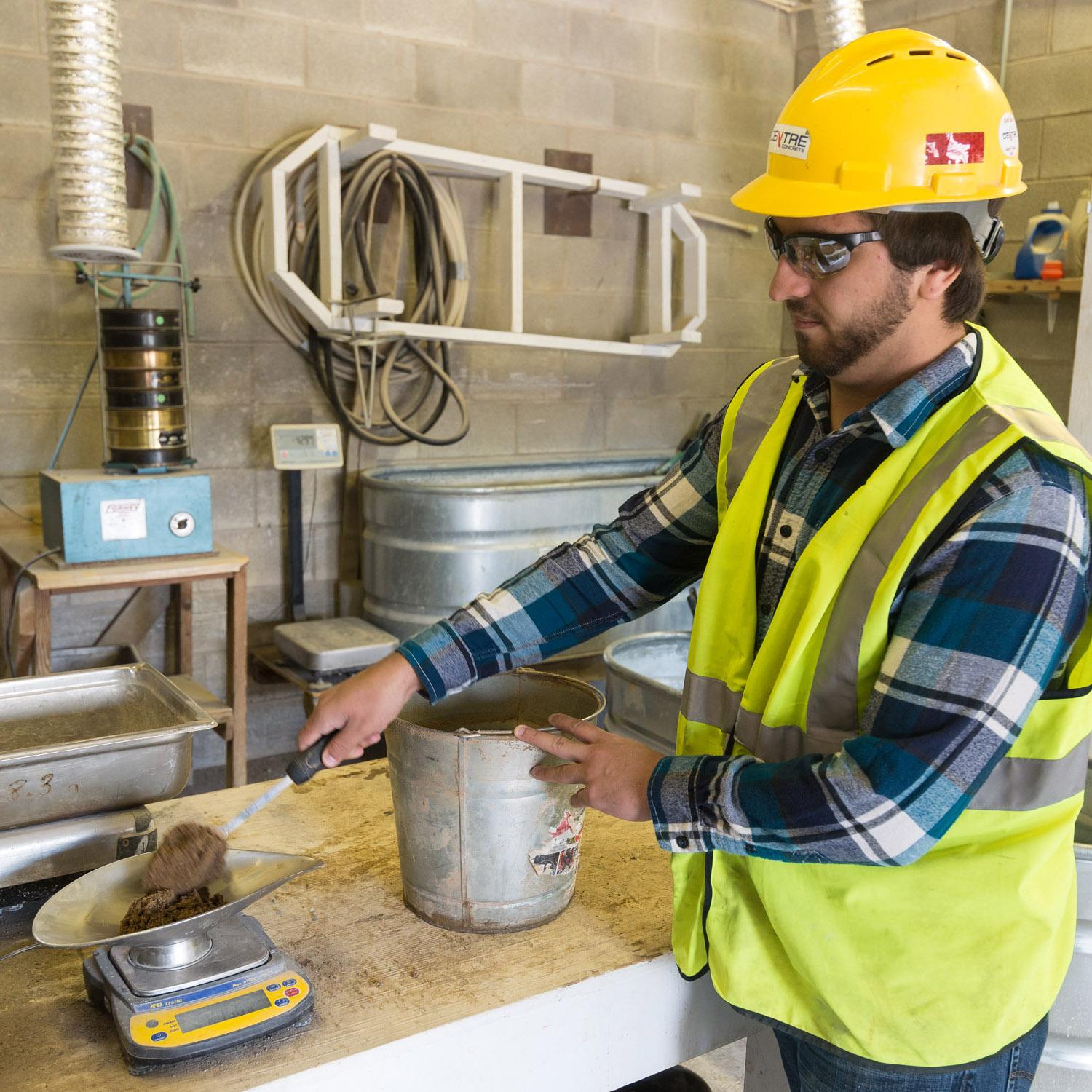The Essential Duty of Concrete Foundation in Structural Stability and Long Life
When it concerns developing a home, the foundation is much more important than you might think. Concrete structures provide unmatched stamina and longevity, ensuring your structure can hold up against different environmental obstacles. Without a solid base, you take the chance of potential concerns like shifting or fracturing, which can jeopardize safety and security and value. Recognizing the subtleties of concrete foundations could be the key to maintaining your investment for many years to find. So, what should you take into consideration following?
Understanding the Value of Concrete Foundations
Concrete foundations are important to the general stability of any type of framework, as they give the necessary support required to endure various tons and environmental conditions. When you think of building a home or a commercial room, the foundation is the very first thing you ought to consider. It serves as a barrier against dampness, shielding your building from water damages. A well-placed concrete foundation likewise prevents settling and changing, which can bring about fractures in walls and floors. You'll want to assure that the foundation is effectively designed and enhanced, as this impacts the long life of your building. In addition, a solid structure can boost energy effectiveness by minimizing air leakages. Keep in mind, neglecting the importance of a concrete foundation can result in expensive repair work down the line. So, spending in a top quality foundation upfront is necessary for the stability and durability of your framework.
Advantages of Concrete Structures for Architectural Honesty
While many factors add to a structure's architectural stability, concrete foundations supply unrivaled longevity and strength. You'll value that concrete can endure severe climate condition, resisting both moisture and temperature fluctuations. This strength means your framework is less most likely to experience splitting or moving over time, which can endanger its safety.Additionally, concrete's fundamental weight offers a strong base, avoiding activity during natural events like quakes or floods. When you pick a concrete foundation, you're additionally choosing reduced maintenance; unlike wood, it will not rot or bring in pests, saving you money and time in repairs.Moreover, concrete's fire resistance provides added security, guaranteeing your framework can sustain high temperature levels without significant damages. Generally, purchasing a concrete foundation means you're focusing on the long-term security and stability of your structure, making it a wise selection for any type of construction job.
Usual Kinds Of Concrete Foundations
When it involves developing structures, understanding the usual kinds of concrete foundations can assist you make informed options for your task. The most prevalent types consist of slab-on-grade, crawl area, and complete basement foundations.A slab-on-grade foundation is a straightforward, cost-effective alternative, where a thick concrete slab is poured straight on the ground. This type works well in cozy climates, as it lessens warm loss.Crawl space foundations boost the home somewhat over ground, permitting for ventilation and accessibility to plumbing and electrical systems. This design can aid prevent dampness issues.Full cellar structures offer added living or storage space while giving exceptional architectural support. They require more excavation and are normally used in chillier climates to stop frost heave.
Aspects to Consider When Designing a Concrete Foundation

Best Practices for Putting Up Concrete Foundations
When you're mounting a concrete structure, appropriate website prep work is important to assure security (West Coast General Engineering Concrete). You'll likewise need to comprehend support strategies to boost stamina and toughness. Do not neglect the healing process, as it plays a basic role in attaining a strong structure.
Website Preparation Relevance
Although it may seem uncomplicated, correct website prep work is essential for guaranteeing a strong and durable concrete foundation. Beginning by getting rid of the location of any kind of debris, vegetation, or natural material that can compromise the structure's honesty. Next off, evaluate the dirt type and compaction; you might need to dig deep into or add materials to create a secure base. Level the ground to assure even weight distribution and avoid resolving problems later. Mounting proper water drainage systems is additionally necessary to avoid water buildup, which can weaken the structure over time. Mark out the foundation's dimensions accurately to lead the putting process. By following these actions, you'll set the stage for an effective concrete structure that stands the test of time.
Reinforcement Methods Explained
When the site is appropriately prepared, the next action in guaranteeing a durable concrete structure entails applying effective support strategies. You should start by utilizing steel rebar, which supplies tensile strength and helps avoid splitting. Lay the rebar in a grid pattern, making certain it rises utilizing spacers to keep appropriate insurance coverage. In addition, think about utilizing wire mesh for added assistance, especially in locations based on hefty tons. Do not forget to tie the rebar junctions safely with cable. For larger structures, fiber support can enhance longevity, minimizing the danger of contraction cracks. Always follow local structure codes and standards to guarantee conformity. By using these reinforcement methods, you'll substantially boost special info your foundation's toughness and long life, laying a strong groundwork for your framework.
Healing Process Fundamentals
To guarantee your concrete structure cures properly, it is essential to preserve ample wetness and temperature conditions right away after pouring. Begin by covering the surface with a wet burlap or plastic bed linen to preserve moisture. This keeps the concrete hydrated, protecting against splits and making sure toughness. You must also keep an eye on the temperature; suitable healing problems are between 50 ° F and 90 ° F. If it's as well warm, mist the surface frequently to avoid fast evaporation. For winter, consider using insulating coverings to maintain warmth. Objective for a healing period of at the very least seven days, as this is crucial for optimal stamina advancement. By adhering to these best techniques, you'll enhance your structure's toughness and durability, making certain architectural honesty for several years to come.
Maintenance of Concrete Foundations for Long Life
To maintain your concrete structure solid and long-term, regular assessments are essential. You must additionally guarantee reliable water drainage options are in location to stop water damages. If you spot any type of cracks, addressing them quickly will save you from bigger troubles down the line.

Regular Inspections and Assessments
While routine assessments and assessments could appear like a task, they're important for keeping the honesty of your concrete foundation. By routinely looking for fractures, shifts, or indicators of wear, you can catch prospective issues before they rise into expensive fixings. Search for any kind of water pooling around the structure or uncommon settling, as these can indicate underlying issues. It's likewise a good idea to keep an eye on any kind of adjustments in your home's framework, like doors that stick or home windows that do not open efficiently. Keeping a document of your evaluations aids track modifications over time, permitting aggressive upkeep. Inevitably, these evaluations assure your structure remains secure, supporting the longevity and safety of your entire framework. Do not forget this vital facet of homeownership!
Reliable Drainage Solutions
Regular assessments can expose issues like drainage issues that could endanger your concrete structure's stability. To stop water build-up, assure your rain gutters and downspouts direct water away from the structure. Installing French drains pipes can properly redirect surface and groundwater, decreasing pressure on your structure walls. In addition, grading the soil around your home helps guarantee that water streams away, instead than pooling near your foundation.Consider using sump pumps in areas vulnerable to flooding, as they proactively remove excess water. Regularly look for obstructions in drainage systems and clear them without delay. You'll secure your structure's stability and long life by taking these proactive measures. Bear in mind, effective water drainage options are important for keeping a strong, long lasting concrete structure.
Prompt Fracture Fixes
When you see fractures in your concrete foundation, resolving them immediately is crucial for maintaining its long life. Little cracks can promptly evolve into bigger concerns, endangering the structural stability of your home. Frequently evaluate your foundation for indications of damage, such as straight or vertical fractures. If you identify any type of, do not wait-- fix them quickly. You can utilize epoxy injections or concrete patching compounds, which are efficient for sealing splits. Constantly adhere to the maker's guidelines and take into consideration getting in touch with a professional for significant damage. Keep in mind, prompt fixings not only enhance your foundation's toughness but likewise conserve you money over time by preventing more considerable repairs down the line. Stay Check Out Your URL aggressive, and your structure will remain strong and protected.
Addressing Typical Concerns With Concrete Structures
Concrete structures can encounter various issues over time, making it essential to identify and resolve them promptly. Among one of the most typical problems is cracking, which can occur as a result of temperature fluctuations or working out dirt. If you observe fractures, it's crucial to analyze their dimension and deepness; tiny fractures can frequently be secured, while bigger ones may need professional evaluation.Water breach is one more significant issue. Excess wetness can result in mold and mildew growth and structural deterioration. Assurance proper drain around your structure to reduce this risk. In addition, look for indicators of moving or bowing walls, as this can indicate underlying issues with your structure's stability.Regular evaluations are essential to capture these issues early. If you identify any type of concerning signs, do not hesitate to seek advice from a foundation professional. By remaining aggressive, you can keep the integrity and longevity of your concrete structure, guaranteeing your home stays safe and protected.
Often Asked Inquiries
Just How Does Soil Type Influence Concrete Foundation Performance?
Soil type significantly affects concrete foundation performance. If you've got large clay, for circumstances, it can create moving and fracturing. Sandy dirt could lead to working out. Recognizing your soil aids assure a secure foundation.
Can Concrete Foundations Be Fixed if Harmed?
Yes, you can fix broken concrete structures. Depending upon the extent of the damage, strategies like epoxy shot or piece jacking can recover stability. It's best to speak with a professional for effective remedies.
What Is the Normal Life Expectancy of a Concrete Foundation?
A concrete structure typically lasts 30 useful reference to 100 years, depending upon variables like soil problems, climate, and maintenance. You'll intend to maintain an eye on it to ensure it remains in good shape throughout its life expectancy.
Exist Option Products to Concrete for Foundations?
Yes, there are choices to concrete for foundations, like steel, hardwood, or perhaps recycled materials. Each option has special advantages and disadvantages, so you ought to consider your task's details needs when picking the best material.
How Does Environment Effect Concrete Foundation Sturdiness?
Environment considerably influences concrete foundation sturdiness (West Coast General Engineering concrete foundation Rancho Cucamonga). Severe temperatures, dampness, and freeze-thaw cycles can weaken the material, causing fractures and architectural issues. You should think about regional climate problems when planning your foundation to guarantee lasting efficiency